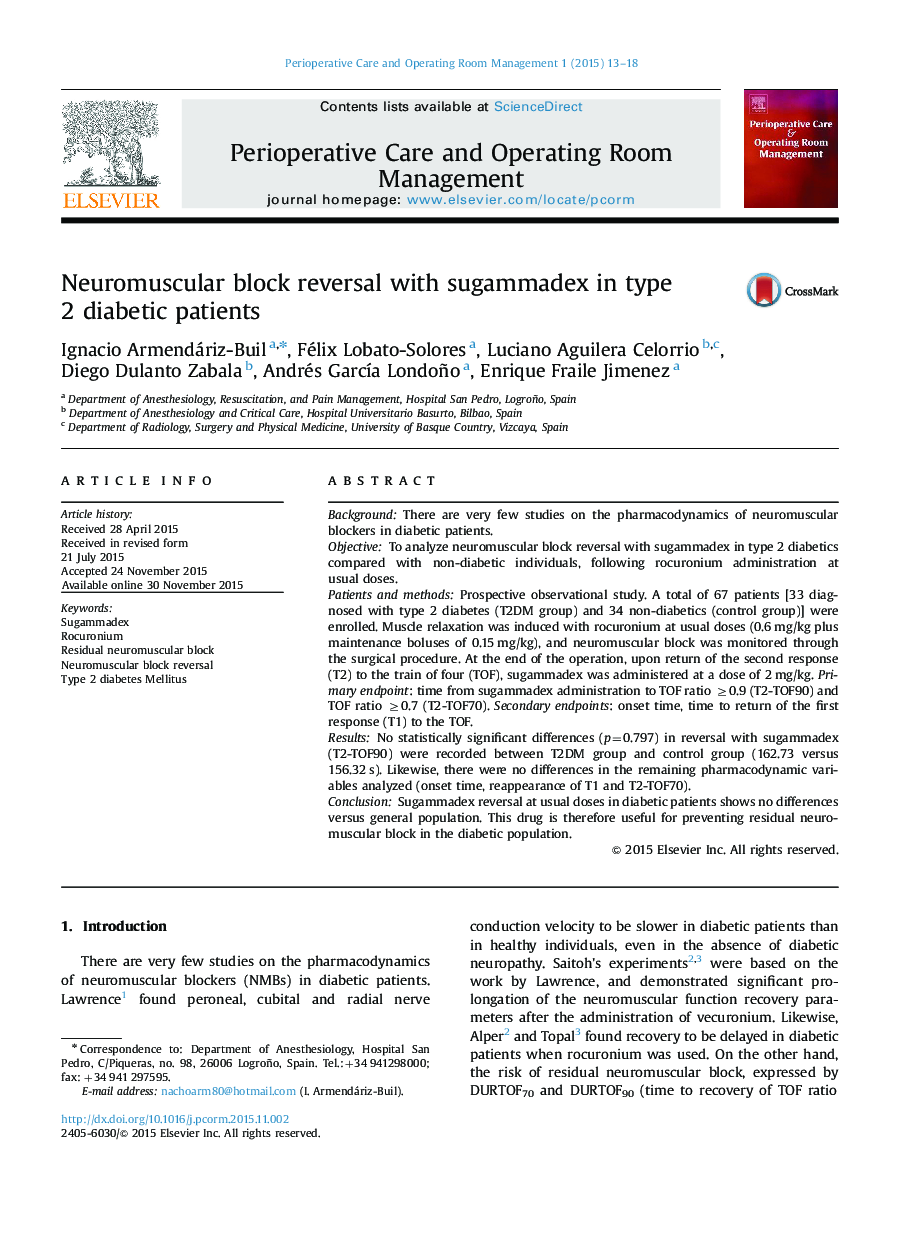| Article ID | Journal | Published Year | Pages | File Type |
|---|---|---|---|---|
| 1026784 | Perioperative Care and Operating Room Management | 2015 | 6 Pages |
BackgroundThere are very few studies on the pharmacodynamics of neuromuscular blockers in diabetic patients.ObjectiveTo analyze neuromuscular block reversal with sugammadex in type 2 diabetics compared with non-diabetic individuals, following rocuronium administration at usual doses.Patients and methodsProspective observational study. A total of 67 patients [33 diagnosed with type 2 diabetes (T2DM group) and 34 non-diabetics (control group)] were enrolled. Muscle relaxation was induced with rocuronium at usual doses (0.6 mg/kg plus maintenance boluses of 0.15 mg/kg), and neuromuscular block was monitored through the surgical procedure. At the end of the operation, upon return of the second response (T2) to the train of four (TOF), sugammadex was administered at a dose of 2 mg/kg. Primary endpoint: time from sugammadex administration to TOF ratio ≥0.9 (T2-TOF90) and TOF ratio ≥0.7 (T2-TOF70). Secondary endpoints: onset time, time to return of the first response (T1) to the TOF.ResultsNo statistically significant differences (p=0.797) in reversal with sugammadex (T2-TOF90) were recorded between T2DM group and control group (162.73 versus 156.32 s). Likewise, there were no differences in the remaining pharmacodynamic variables analyzed (onset time, reappearance of T1 and T2-TOF70).ConclusionSugammadex reversal at usual doses in diabetic patients shows no differences versus general population. This drug is therefore useful for preventing residual neuromuscular block in the diabetic population.
